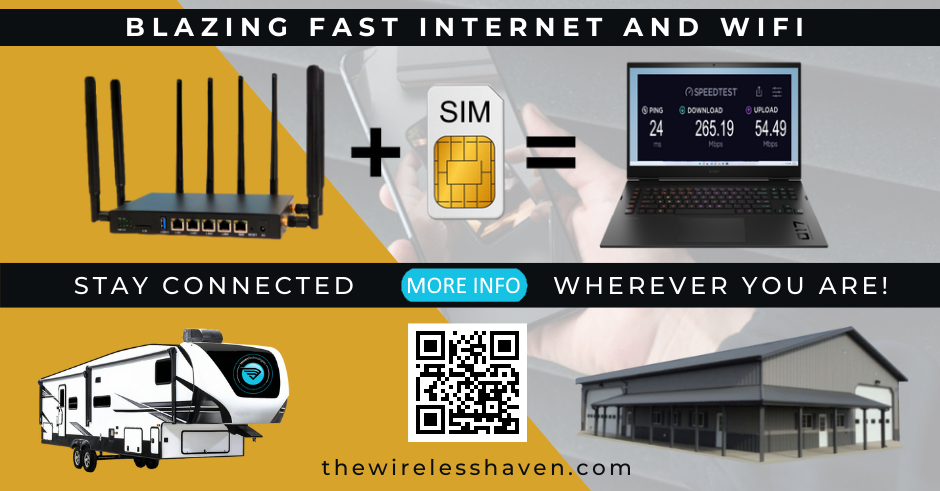TUTORIAL DISCLAIMER: This tutorial is based on using a Windows PC and a Sierra MC7455 modem mounted in a
mPCIE-to-USB adapter. We will be using the a terminal from the Windows device to issue commands to the MC7455
modem. Different devices and methods to issue the AT commands may require various alterations from the
examples below. Always take caution when accessing a modem's interface. This forum, as well as the writer, will
assume NO liability for use of this information. In short, be cautious and use at your own risk.
If you are just getting started with programming the modem, there are three basic utilities required for this
method:
- Windows Connection Manager software (USB Drivers) (allowing Windows to recognize the modem)
- Latest Windows executable Generic Firmware (for the MC7455 modem)
- Huawei Terminal (to issues the commands to the modem)
Install the Air Prime Driver Software on the Windows machine via the executable file.
Run the Huawei Terminal executable file as an administrator. When the terminal opens, select the white down
arrow button, and select the COM port that corresponds to the Sierra Wireless…WWAN Modem and hit the Connect
button.
If you are working with the EM7565 it is recommended to use PuTTY in Serial mode to program the modem. Refer to the bottom of this topic for more instructions.
NOTE: If the terminal does not list the Sierra modem, open the Windows device manager (Press the Windows Key +
X then Device Manager) and look at the Ports (COM & LPT) and see on what COM port the modem is located and use
that Port Number.
If you are now connected to the modem through the terminal, go the white outlined slot on the bottom of the
Terminal and type (or copy and paste) the following and hit enter:
Code: Select all
ATI
the modem.
If you see these details, congratulations! You are now ready to begin with issuing commands.
Type, or copy and paste (one line at a time) the AT commands that follow and hit Enter after every command.
In our first command we must tell them modem we have permission to enter commands. It is important to
remember that you must first enter this command any time you access the modem to enter various other
commands. It is also used to return more thorough or detailed information when requested.
Code: Select all
at!entercnd="A710"
Code: Select all
at!resetCode: Select all
at!usbcomp=1,1,1009
Code: Select all
at!usbcomp=1,1,10dCode: Select all
at!usbcomp=1,1,100d
Code: Select all
AT!USBCOMP=1,3,1009Code: Select all
at!usbcomp?
Code: Select all
at+cgdcont=1,"IP","r.ispsn"
Code: Select all
Send: at+cgdcont?
Recieve: at+cgdcont?
Recieve: +CGDCONT: 1,"IP","r.ispsn","0.0.0.0",0,0,0,0
Code: Select all
at+cgdcont=?
Code: Select all
Recieve: +CGDCONT: (1-24),"IP",,,(0-2),(0-4),(0-1),(0-1)
Recieve: +CGDCONT: (1-24),"PPP",,,(0-2),(0-4),(0-1),(0-1)
Recieve: +CGDCONT: (1-24),"IPV6",,,(0-2),(0-4),(0-1),(0-1)
Recieve: +CGDCONT: (1-24),"IPV4V6",,,(0-2),(0-4),(0-1),(0-1)Code: Select all
at+cgdcont=1,"IPV4V6","r.ispsn"
Code: Select all
Recieve: +CGDCONT: 1,"IPV4V6","r.ispsn","0.0.0.0.0.0.0.0.0.0.0.0.0.0.0.0",0,0,0,0Code: Select all
At!custom="IPV6ENABLE",1Code: Select all
At!custom="IPV6ENABLE",0(NOTE: If you are doing a new custom build of LEDE/OpenWRT, I suggest you skip the band programming and/or
locking until the build is up and running properly--the modem will automatically select the bands). But, for this
demo and using Sprint, we can assign each band a reference command which we may later use to lock the modem
to an specific band or group of bands. If you are still in the same terminal session, you can skip the first permission
command.
Code: Select all
at!entercnd="A710"
at!band=0A,"B25",0,0000000001000000
at!band=0B,"B26",0,0000000002000000
at!band=0C,"B41",0,0000010000000000
at!band=0D,"Sprint (All)",0,0000010003000000Creating an “All” band holds true for all carriers and bands available to that carrier. Take special notice of
redundant numbered bands and frequencies (when listed) to assure they match those of your carrier.
If you are using a different carrier other than Sprint and want multiple bands combined into one you may find that some of those combine band binaries have letters in them. Here is an example of what that would look like using Verizon:
Code: Select all
at!band=10,"B2",0,0000000000000002
at!band=11,"B4",0,0000000000000008
at!band=12,"B5",0,0000000000000010
at!band=13,"B13",0,0000000000001000
at!band=0E,"VZW (All)",0,000000000000101ATo access what bands are available (and their binaries) we can use the following command:
Code: Select all
at!band=?
Code: Select all
at!band=0C
Code: Select all
at!band=0D
Code: Select all
at!band?
important when using various scripts by different people who may assign them differently.
If you have created a band and would like to remove that Index letter (i.e., 0c) from the list of available lockable bands, use the following command and insert your index name:
Code: Select all
at!band=**,"",,Code: Select all
at!band=0A,"",,frequency and allow the modem to connect as it wishes:
Code: Select all
at!entercnd="A710"
at!band=00
Code: Select all
at!selrat=06modem such as what band you are currently connected to and signal strength.
Code: Select all
at!gstatus?etc...) which may create connection issues. To review the firmware (and/or preferred carrier) configuration:
Code: Select all
at!IMPREF?
To restore to OEM settings:
Code: Select all
at!entercnd="A710"Code: Select all
at!RMARESET=1
restore:
Code: Select all
at!RMARESET=OEM
or
AT!NVRESTORE=1
One note on programming the EM7565. The Huawei Terminal seems to have a conflict with issuing some commands to the EM7565. I recommend you use the Huawei Terminal to locate the COM Port number assigned to WWAN Modem , then use PuTTY in Serial mode to program the modem.
I encourage everyone to download a copy of the AT Command reference guide to better understand the various
commands.
I also encourage members to share AT commands they find useful and provide a brief description of when they are
used and what they do.


